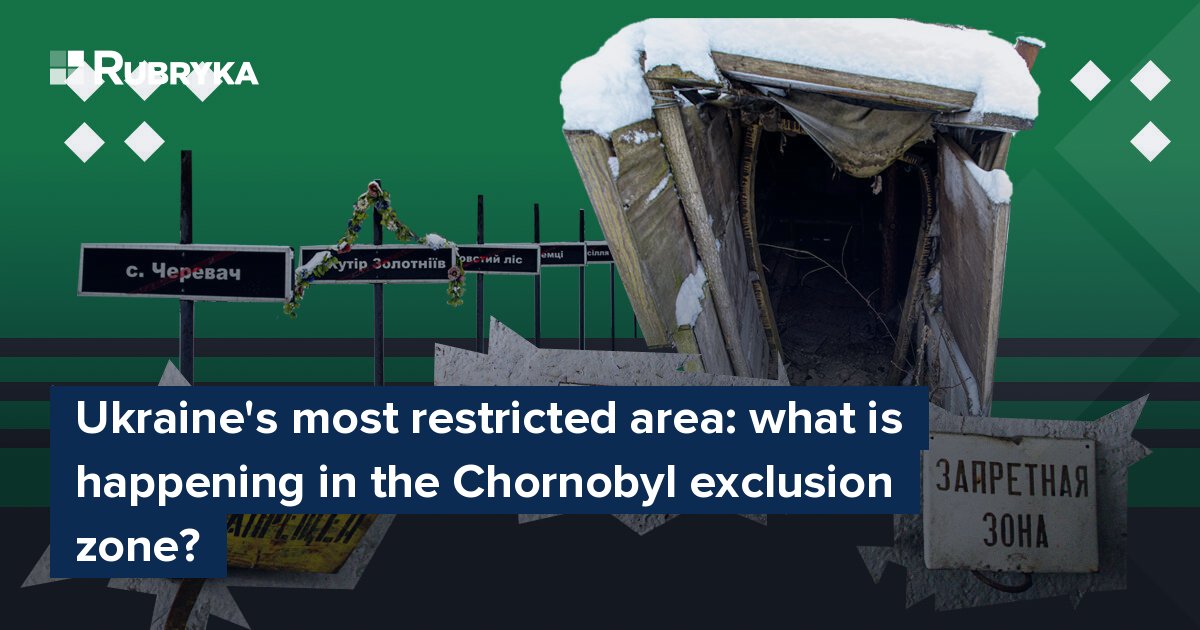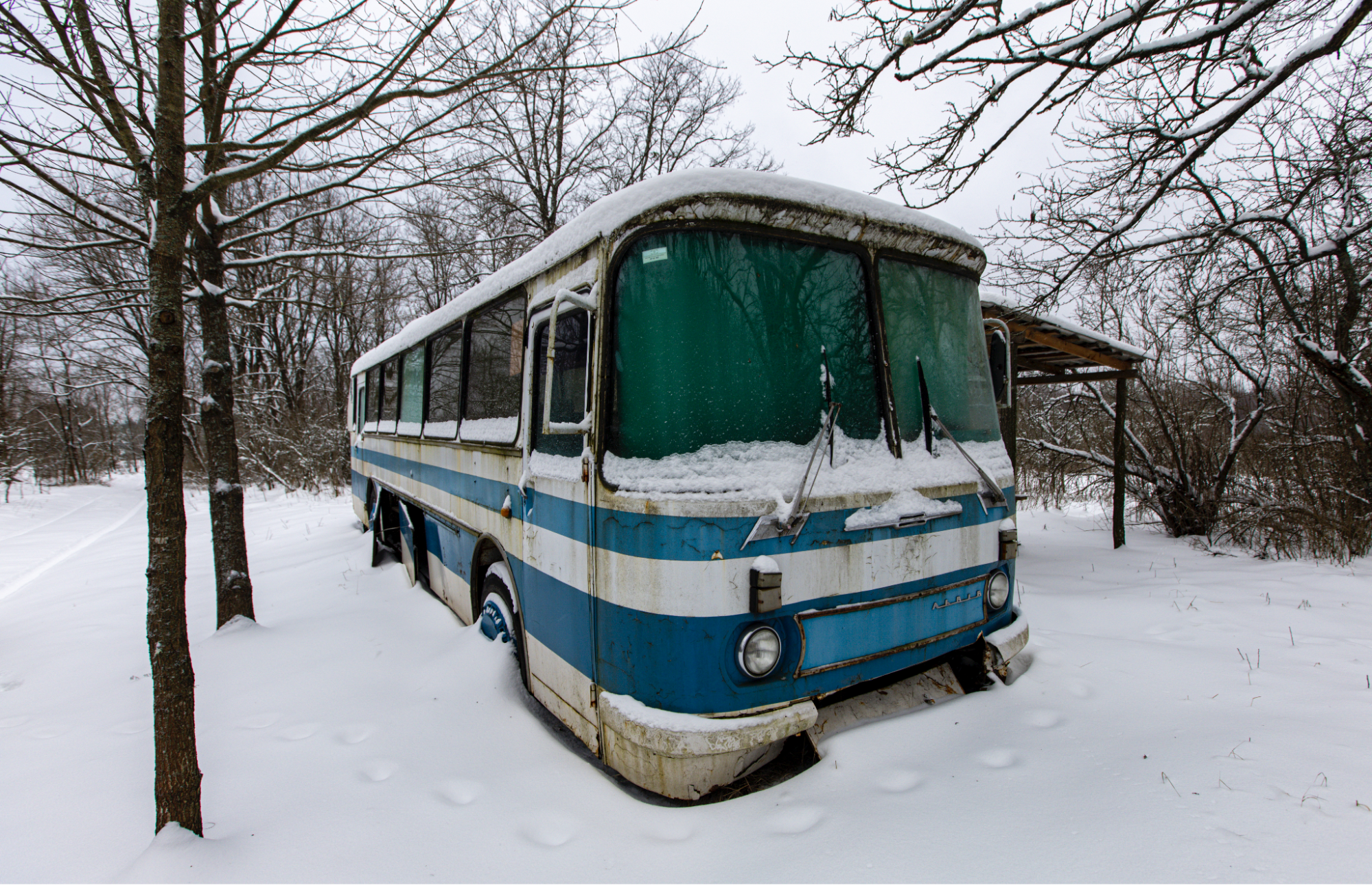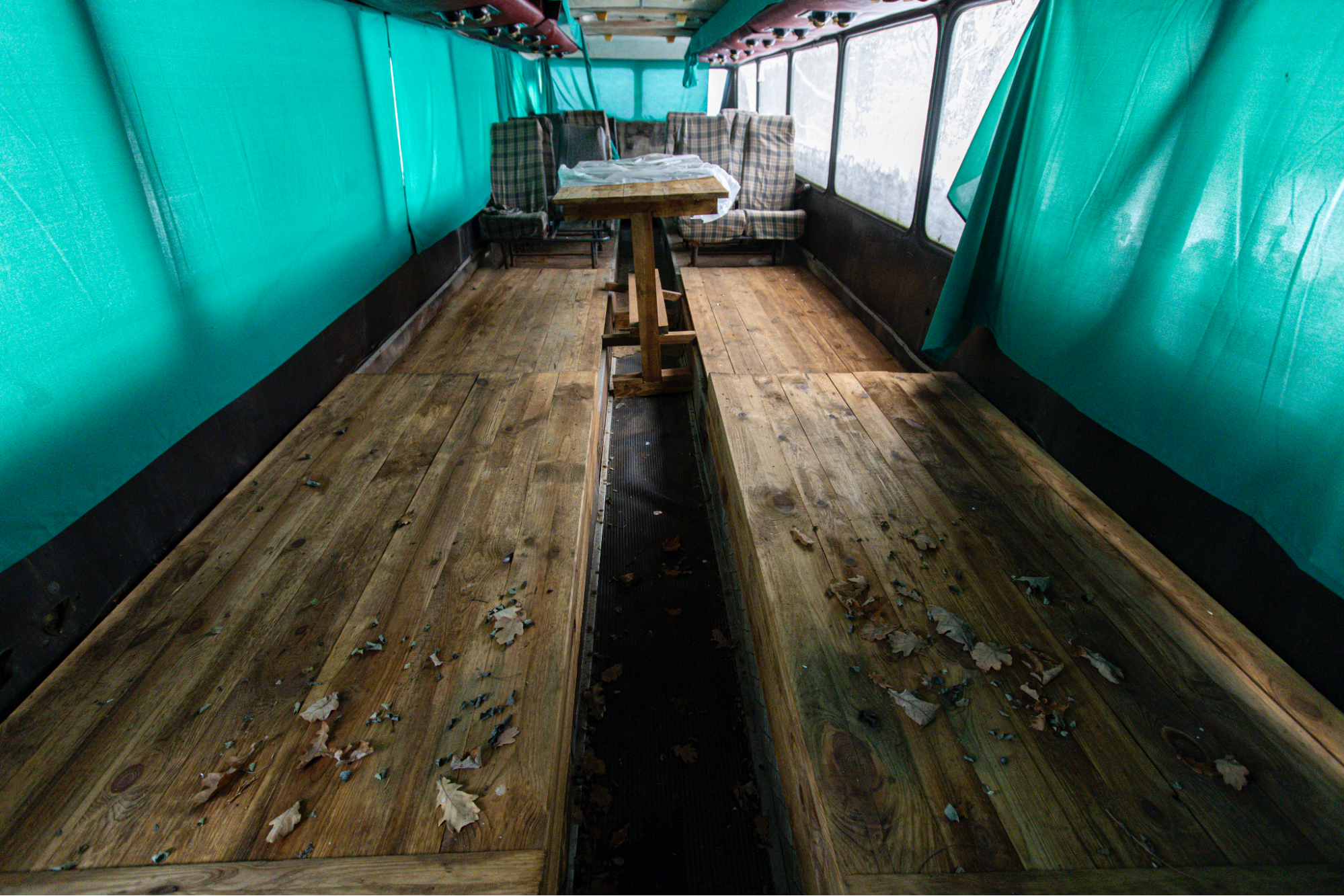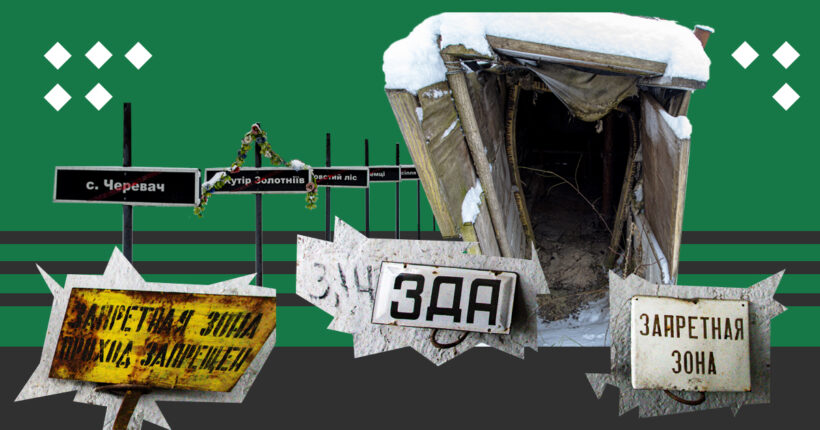
Shortly after the devastating accident at the Chornobyl Nuclear Power Plant in 1986, much of the surrounding area was designated a closed "exclusion zone," due to heavy radiation contamination, and people who lived here were relocated for their safety. After 30 years, much of the area was declared a biosphere reserve, and proposals were floated to designate the area as a UNESCO World Heritage Site.

Snow-covered roads of the Chornobyl radiation-ecological biosphere reserve. Photo: Mykola Tymchenko
Ecorubric conducted a series of reports about UNESCO-listed biosphere reserves in Ukraine — those that are currently occupied by Russian forces, on the demarcation line, and deep in the rear — in order to tell how the war affects these territories so the world learns more about the lives of people and nature in Ukraine.
The Chornobyl Reserve has not yet been included in the World Network of UNESCO Biosphere Reserves, although its zoning and functions generally meet the requirements for biosphere reserves. The trip promised to be interesting: today, it is the most inaccessible reserve for tourists in the territory controlled by Ukraine.
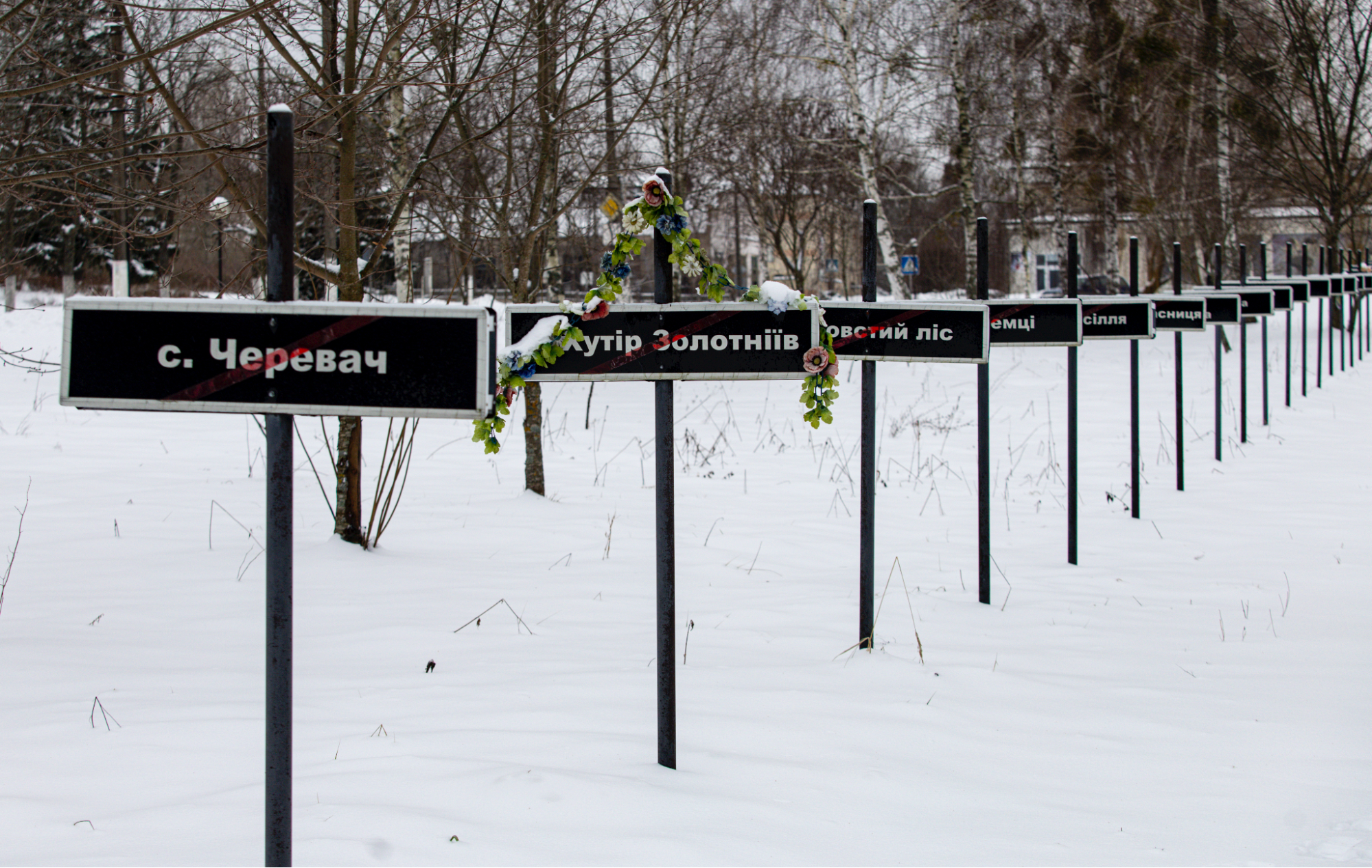
Installation in Chornobyl. On the signs are the names of settlements that had to be relocated after the Chornobyl nuclear power plant accident. Photo: Mykola Tymchenko
What is the problem?
A grenade under the hood and a sand pit — what did the Russians leave behind in the Chornobyl reserve?
The territory of the Chornobyl reserve borders Belarus, and it was through local backroads that Russian troops entered Ukraine in the first days of the full-scale invasion.
At the end of February 2022, the reserve administration evacuated workers in anticipation of an invasion, leaving only people in critical positions. Most of the staff, including the scientific department, saw the consequences of hostilities already in April, after liberation. "When we came here for the first time after the liberation of the territories, we could only take a superficial look at what is being done here. Entering the premises was not allowed, let alone touching things, because everything was potentially mined," says Serhii Obrizan, a senior scientist at the Chornobyl reserve, standing near the trenches and fortifications built by the occupiers along the road.
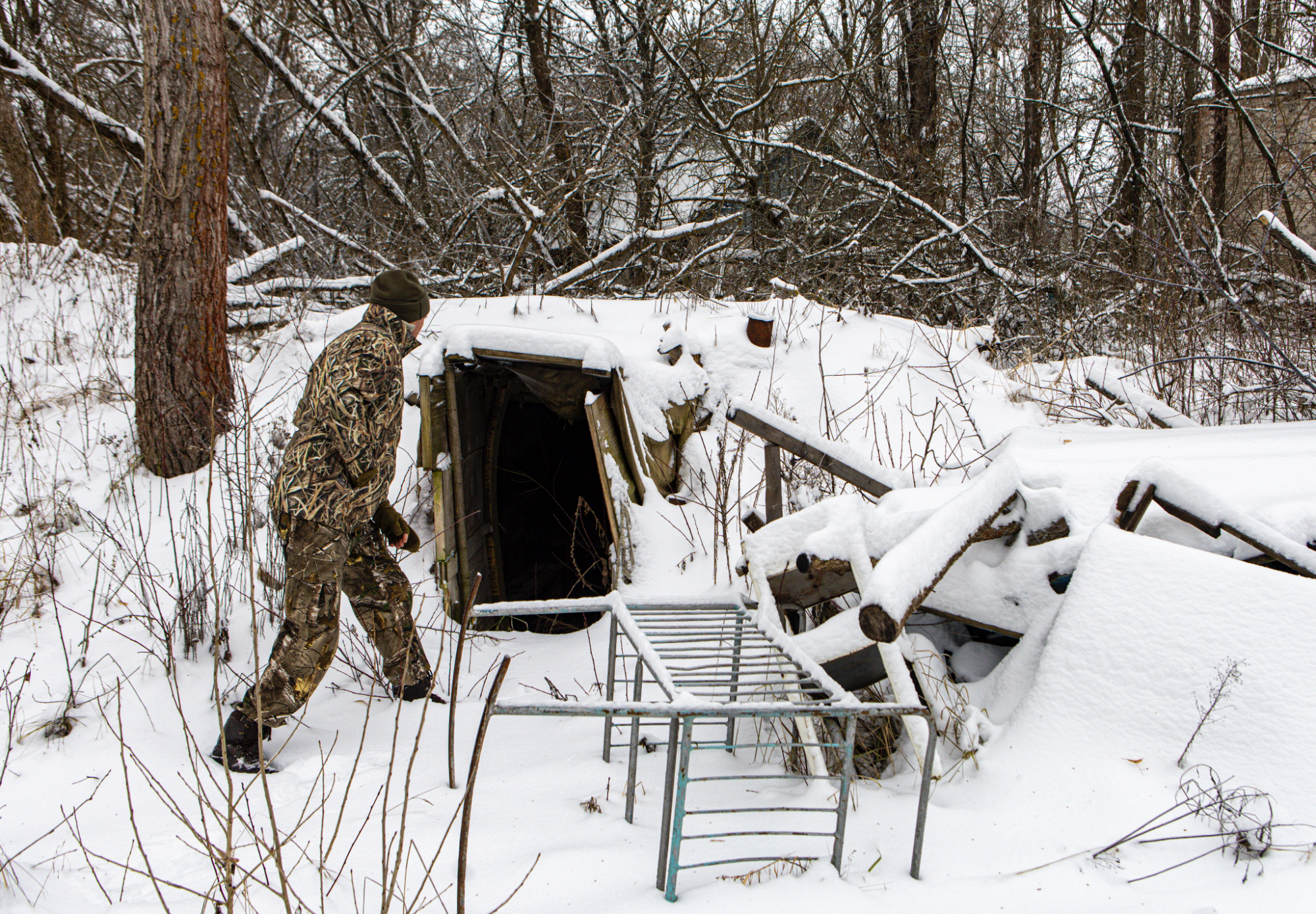
Russian dugout. The occupiers built fortifications in the Chornobyl zone on both sides of the road they entered. Photo: Mykola Tymchenko
Later, on the premises of the reserve's office, Obrizan shows a car that once belonged to the institution. The Russians left a grenade under the hood of this car, and the scientists were saved from severe shrapnel injuries only by following the instructions of the emergency services — not to touch anything.
Gradually, the staff was able to return to their workplaces. Sappers have demined the main roads and buildings, but it is still dangerous to go deep into the forest or to be on the roadside. Of course, this complicates the work of environmentalists: it is impossible to inspect all areas of the reserve and even take data from the camera traps set before the invasion, which worked until the batteries ran out.
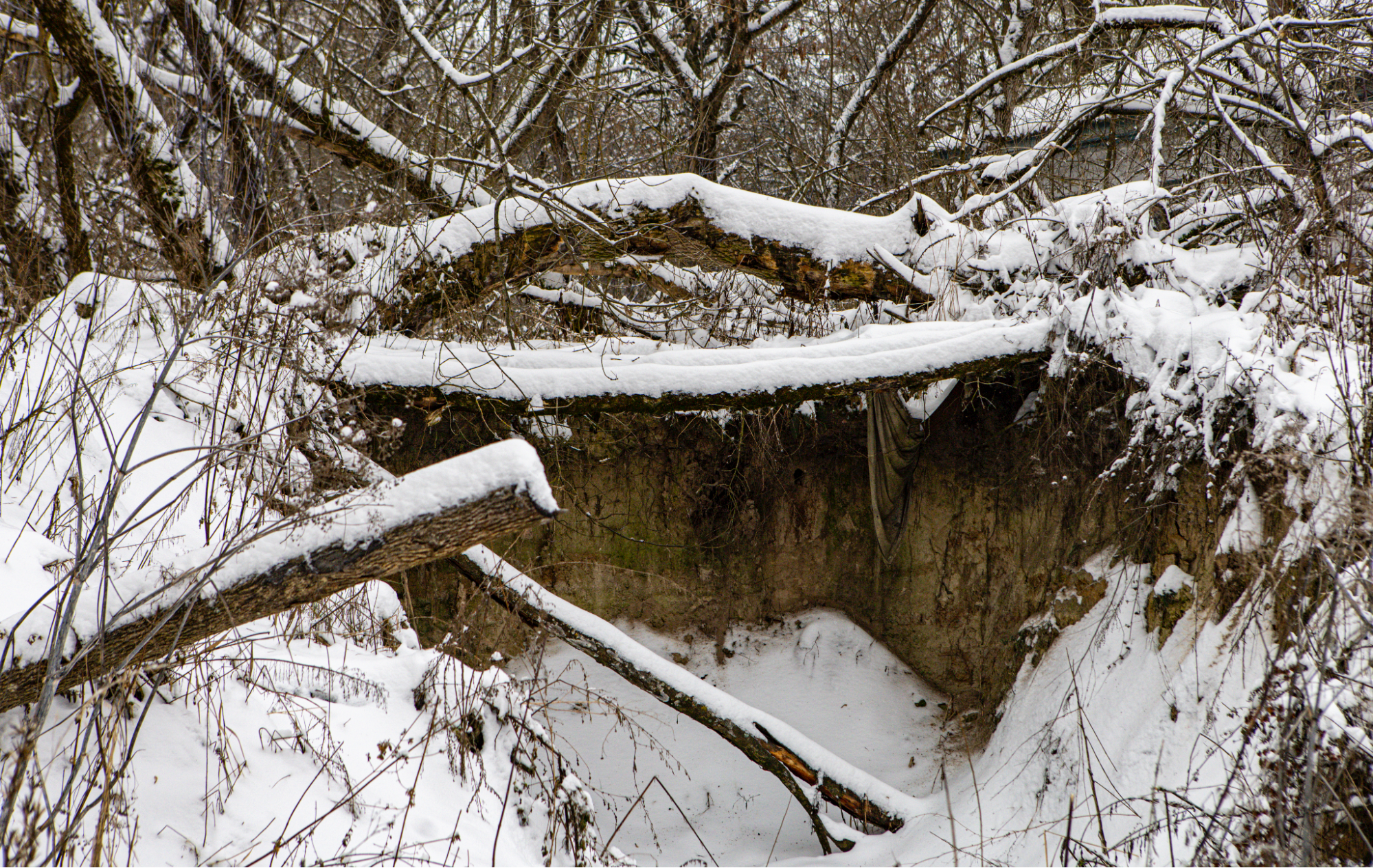
A hood used to hide military equipment. The Russians cut down the trees for the fortifications in the reserve's territory. Photo: Mykola Tymchenko
Mines and strongholds along the roads and further along the Uzh River are not the all consequences of the Russians' stay.
Our team walks along a snowy path, where we see the tracks of at least two animals — a deer and a hare. These are typical animals for the area, which are abundant here due to the scarcity of people. Otters, foxes, bears, Przewalski's horses, moose, and even lynxes are the main inhabitants of the exclusion zone.
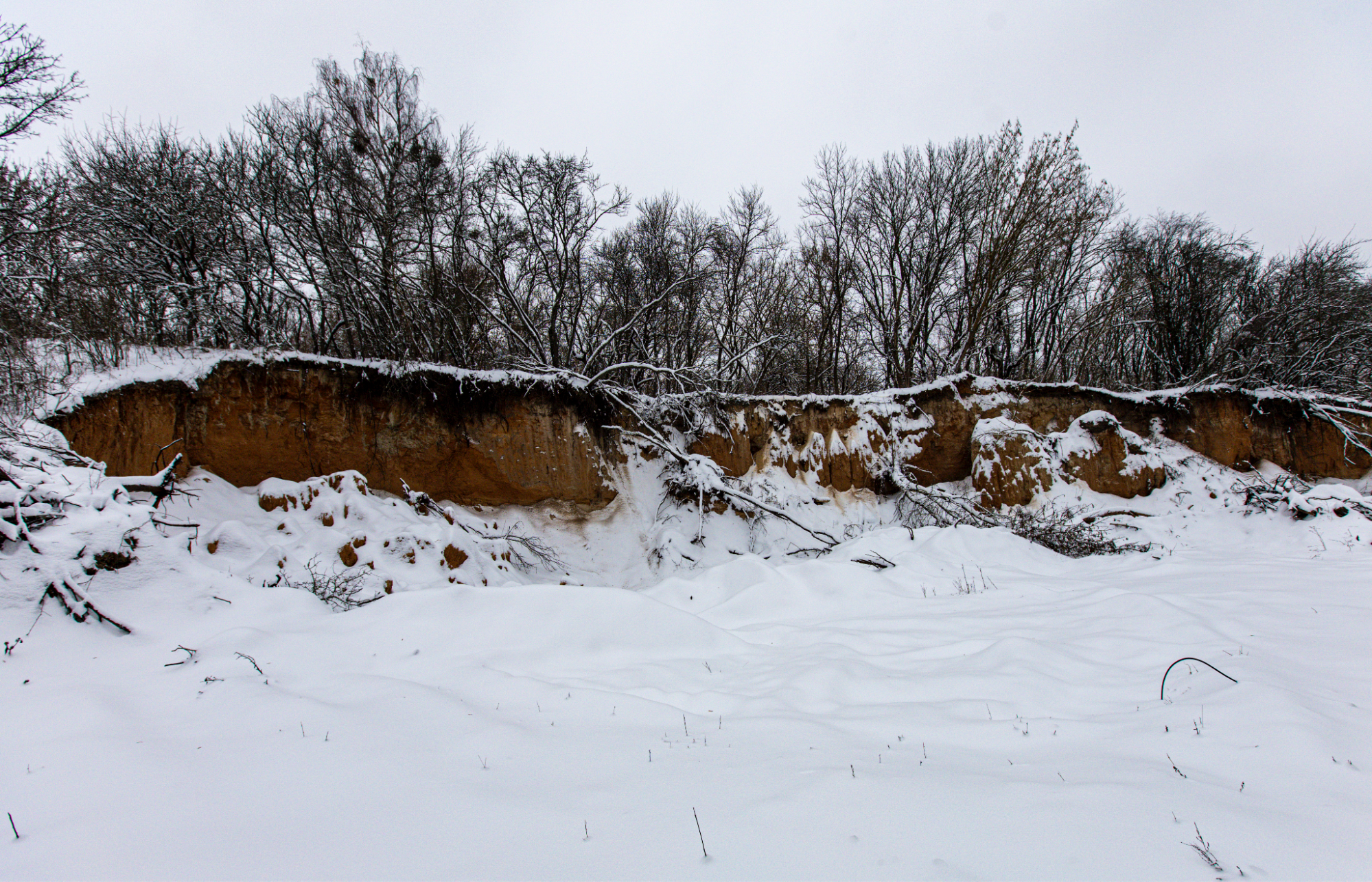
Before the invasion, there was a gentle slope here, which animals used to go to the watering hole, but the Russians needed sand to strengthen their positions. The Russian military, extracting sand for fortifications, destroyed the landscape. Photo: Mykola Tymchenko
A big cliff opens before our eyes. Before the occupiers, there was a gentle slope here, which animals used to go to the watering hole, but the Russians needed sand to strengthen their positions. Without thinking, they began to extract it with construction equipment. Now, a place that had a beautiful landscape and was a migration route looks like a quarry that will grow larger over the years due to rains and floods.
Why is the cause of the fires hidden in activities conducted here more than 30 years ago?
Several interrelated factors cause fires in the exclusion zone. Once rich in marshes, the area was drained before the accident at the Chornobyl nuclear power plant to turn the land into fields in the future. Forests destroyed during World War II were restored with pine plantations. Then, people were evicted, the territory became unsuitable for economic activities, and artificial pine forests growing in even rows remained.
The problem is that forests of exclusively pine are rare in nature and, unlike deciduous or mixed forests, are highly flammable. A fire in a pine forest can quickly become large-scale and will spread until a body of water, a fireproof sand strip, or a deciduous forest is found in its path.
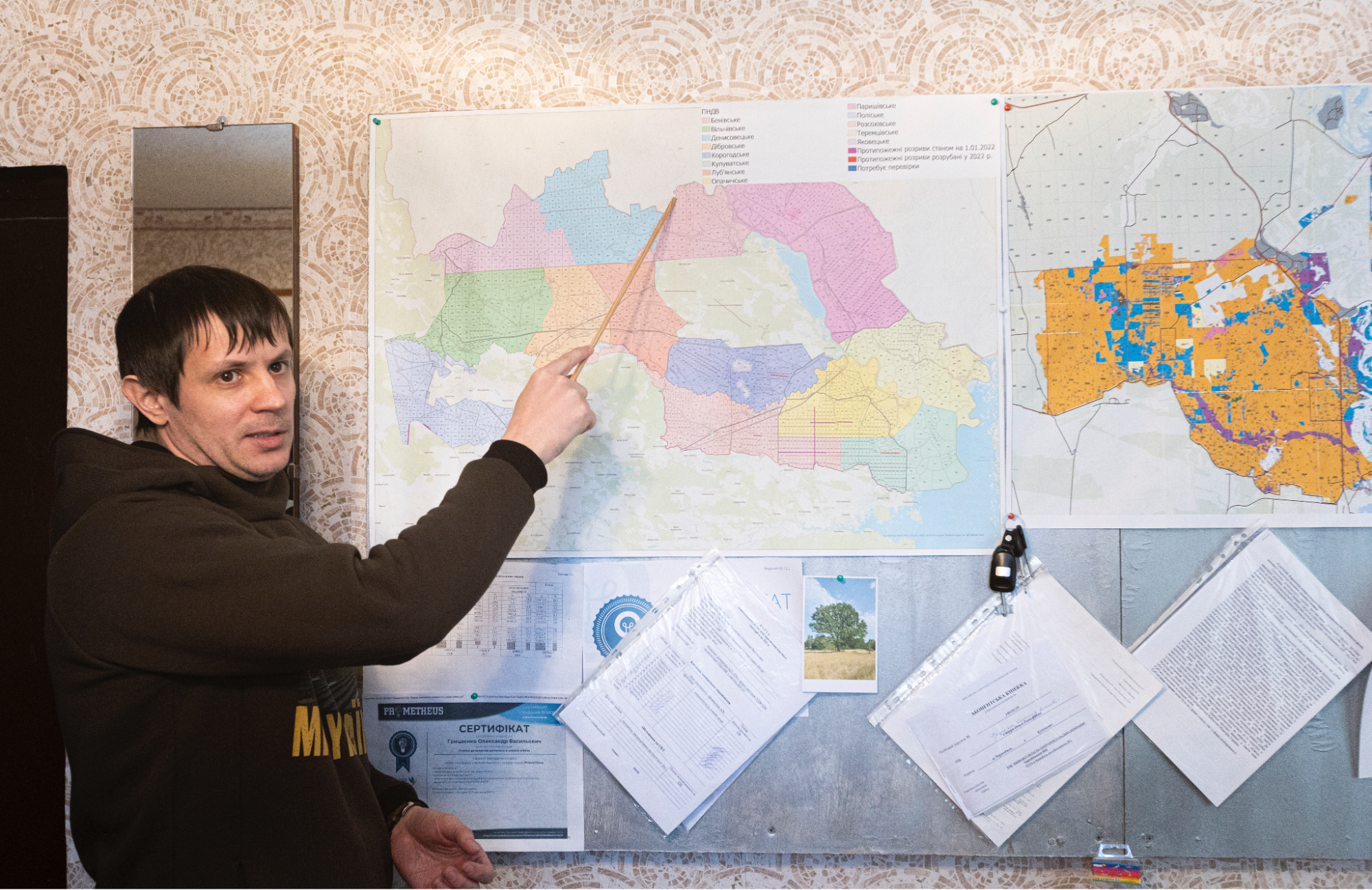
Oleksandr Borsuk, head of the flora and fauna laboratory of the reserve's scientific department, shows on a map where forest fires start in most cases and points to the border with Belarus. Photo: Mykola Tymchenko
Since the beginning of the full-scale war on the reserve territory, fires have spread over more than 30 thousand hectares of territory, of which about 18 thousand hectares are forests.
During the occupation, the Russians did not allow the fire to be extinguished — they simply forbade fire engines from leaving the city of Chornobyl. Now, extinguishing fires is complicated by the danger of landmines.
When scientist Oleksandr Borsuk, head of the flora and fauna laboratory of the scientific department of the reserve, showed us the locations of the largest fires in 2022 on the map, we noticed that most of them started right on the border with Belarus — pointing to probable sabotage by the invading Russian forces. Stolen equipment, broken glass, and doors are typical evidence of the enemy's presence.
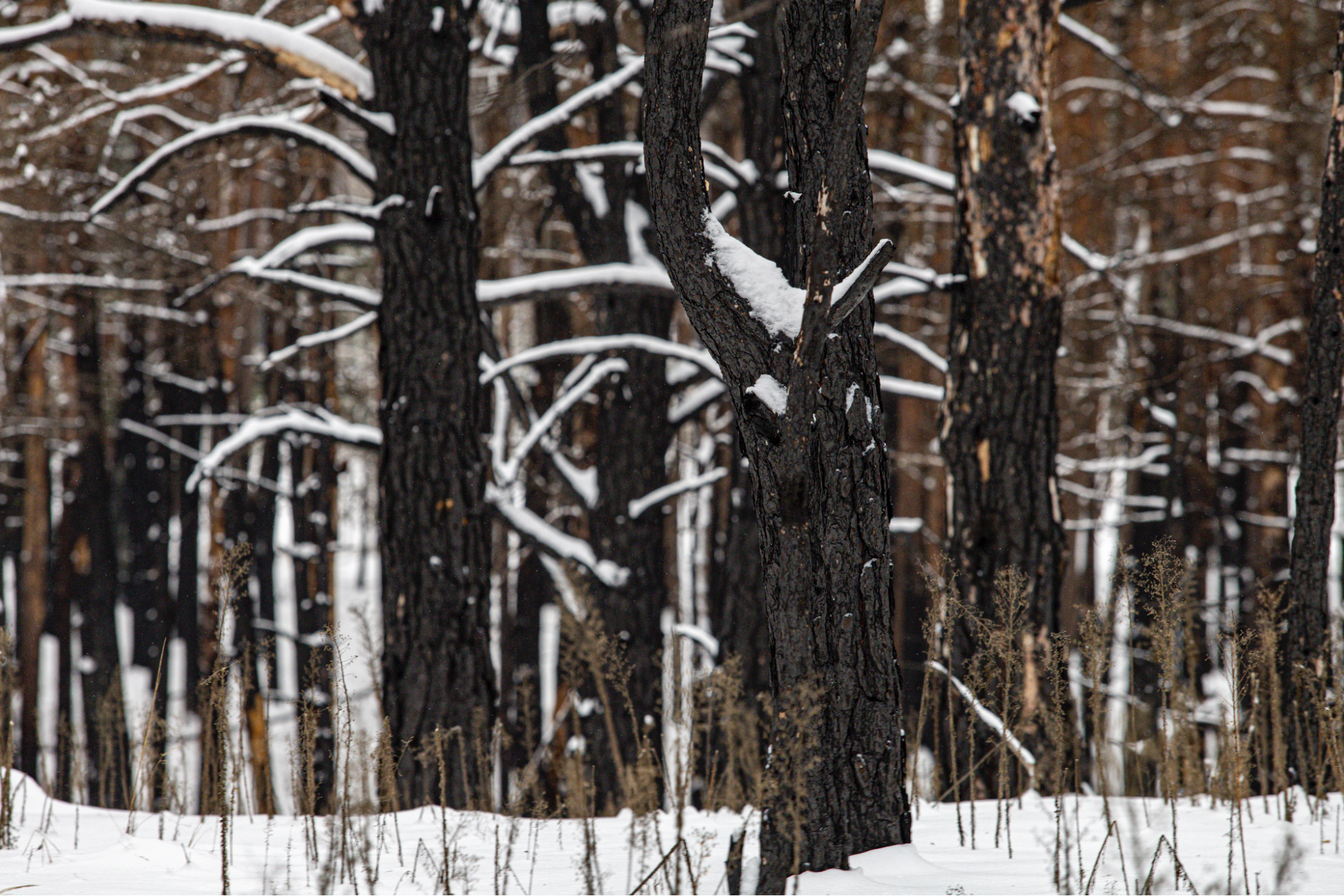
Looking closely, you can see that these plantations are artificial as they grow in rows. Such forests are the least resistant to fires. The area in the photo is no exception, and it was also affected by the fire. Photo: Mykola Tymchenko
Stolen equipment, broken glass and doors
We were lucky enough to get to the Chornobyl Reserve office on the last day before the start of repairs. The premises are equipped with heating, electricity and water. In addition, it is located close to the main road — leaving little doubt as to why Russian forces invaded here: locks were broken, doors strewn apart, laptops, laboratory equipment, and even microscopes gone missing.
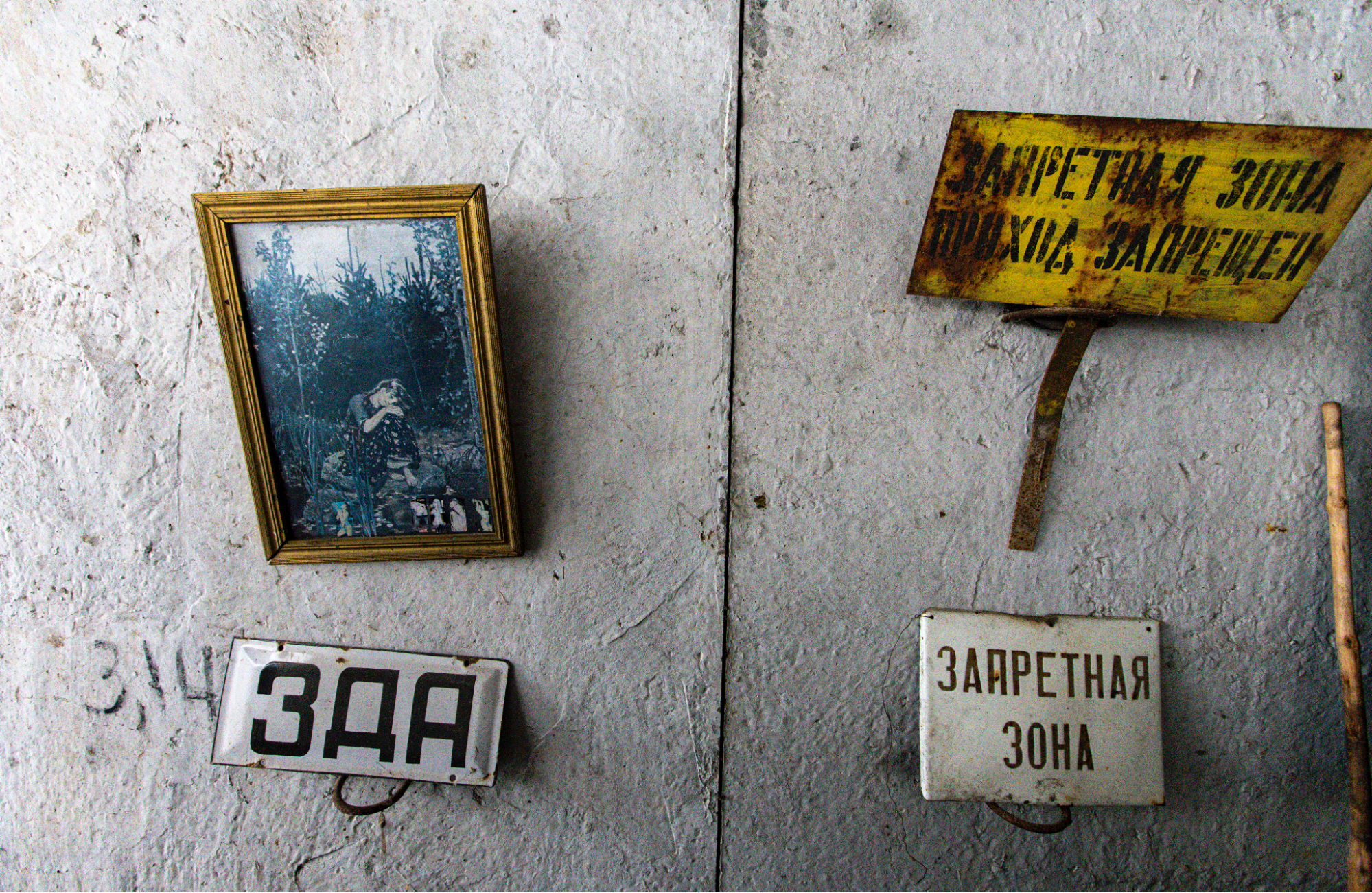
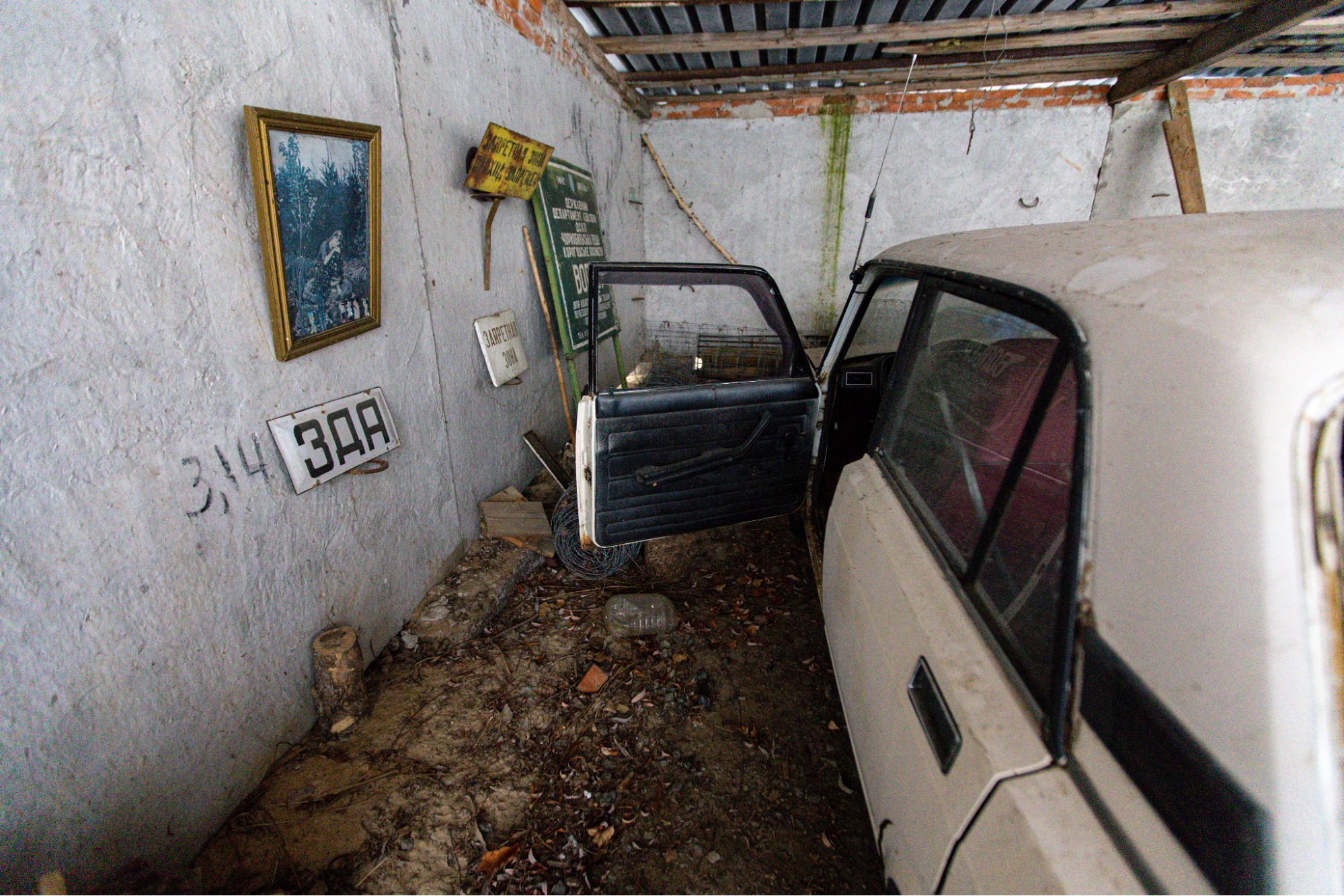
The enemy mined the car after the area was liberated. During demining, a grenade was found under the hood of this car. Photo: Mykola Tymchenko
The Russian military couldn't enter the building, which was close to the office, through the door, and they decided to get there through the wall, where a hole was still gaping. The very next day, repairs will begin here, and fewer and fewer things will remind of the presence of the invaders.
"You know, this place was my home," says Obrizan, who has worked in the exclusion zone for over 20 years. "After [the Russians, ed.] visited here, some disgust appeared."
The Russians also vandalized the yard near the office — leaving obscene writings on the walls and stealing license plates off cars. The occupiers broke the glass of old buses that were supposed to be restored and used as retro attractions. Restoration work is ongoing, but it's not likely there will be any tourists until the war's end.
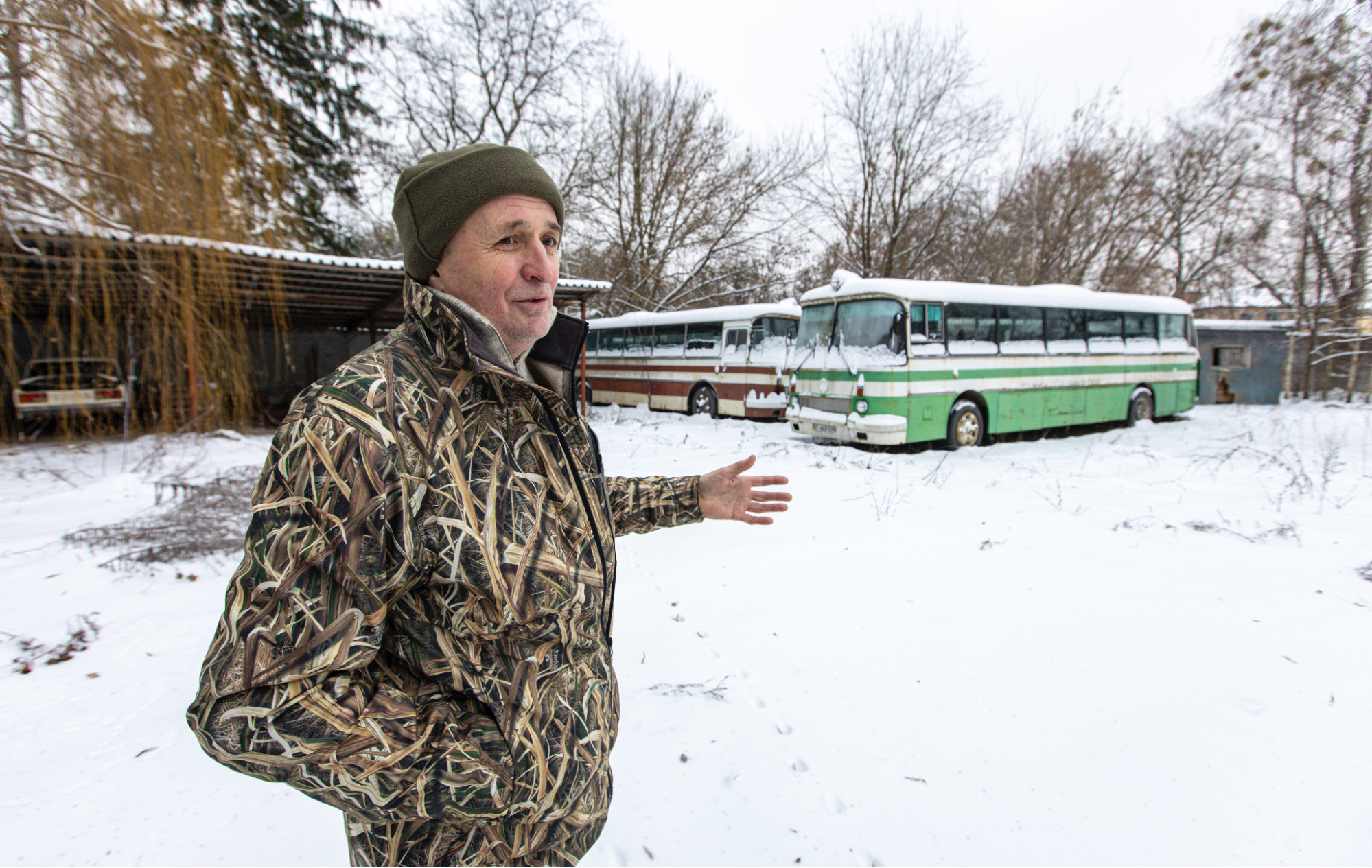
"You know, this place was my home," says Obrizan, who has worked in the exclusion zone for over 20 years. "After [the Russians, ed.] visited here, some disgust appeared." Photo: Mykola Tymchenko
What is the solution?
First, why is Chornobyl not a UNESCO reserve?
The United Nations Educational, Scientific and Cultural Organization – better known as UNESCO – designates as biosphere reserves a category of territories designed to harmonize the relationship between man and nature for sustainable development. These are especially valuable places with unique ecosystems, landscapes, groups of plants and animals, and adjacent territories with a population that constantly interacts with this natural environment. All of them are protected at the national level, so reserves are most often created around nature parks or other protected areas.
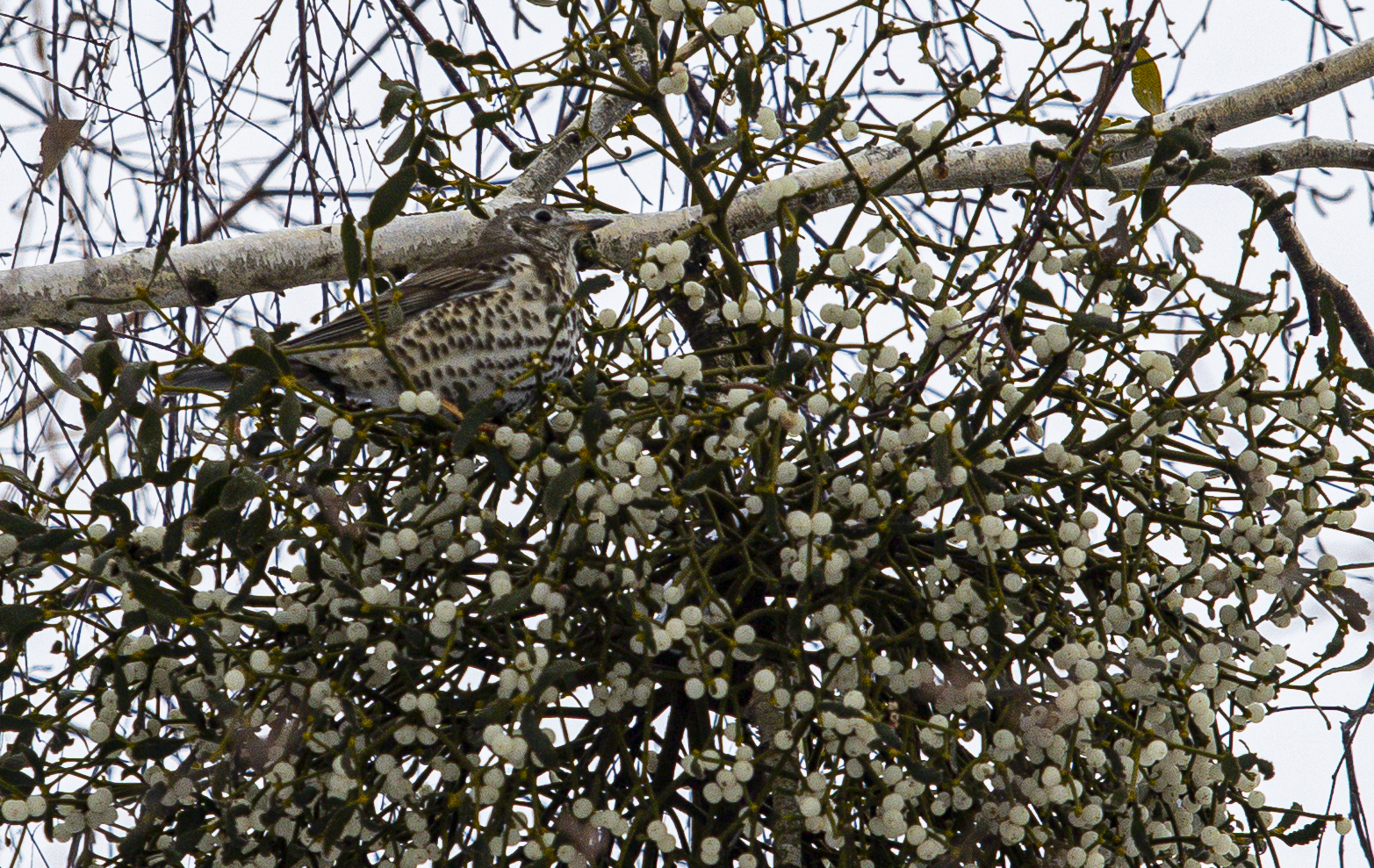
Thrush is sitting in the parasitic plant of mistletoe, which resembles a nest. Photo: Mykola Tymchenko
A mandatory condition for creating reserves is the residence of people engaged in sustainable activities. It can be agriculture, fishing, or the creation of craft products — for example, Carpathian cheese or woolen products in Ukraine's west.
This very point — human habitation — is absent in the Chornobyl Radiation-Ecological Biosphere Reserve. Of course, there are self-settlers here — people allowed to live here who owned real estate before 1986, when the Chornobyl accident occurred or inherited it from relatives. However, it is not easy to become a new self-settler, and few people are willing to live in a territory contaminated with radionuclides without shops, hospitals, and other infrastructure.

No one drives on the roads of the reserve, except for employees of the institution and the postal service cars, which bring mail to self-settlers. Photo: Mykola Tymchenko
There are up to ten self-settled people in the village of Kupuvate, within the exclusion zone. All of them are over 70 years old. They are taken care of by a dedicated department of the State Agency of Ukraine for the Exclusion Zone Management (SAEZM). They call them, visit to check their condition, and bring in groceries. The postal service delivers letters to each of them personally, and employees of the reserve and other enterprises of the exclusion zone, who know the self-settlers by name, drop by from time to time with guests. It is unfortunate to realize this, but by even the most optimistic forecast, no residents will remain here in 10 to 20 years.
However, there is a way out of this situation. If the reserve merges with the territories outside the exclusion zone or with the Mizhrichynskyi Regional Landscape Park, where people still live, the unique territories will be able to receive the special status of a biosphere reserve. This would enable it to receive support at the international level to better study, preserve, and restore these areas.
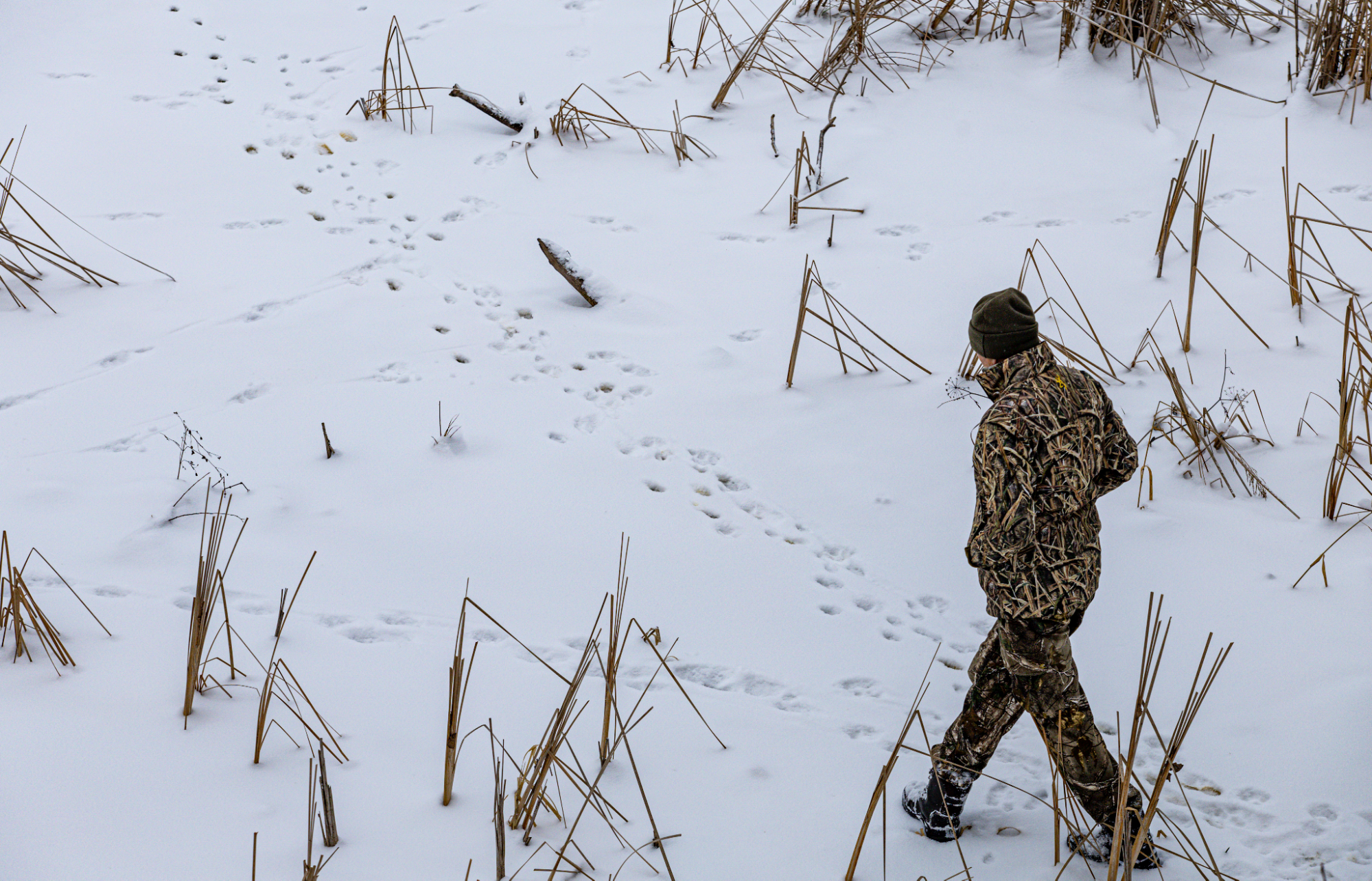
Serhii Obrizan examines the tracks of at least three wild animals on frozen Prypyat River. Photo: Mykola Tymchenko
Therefore, the reserve has a lot of educational work ahead of it among the local population. Until all the measures are completed, the Chornobyl Radiation-Ecological Biosphere Reserve will only have a national status.
What will be done with the swamps that were drained during the times of the USSR?
One of the tasks of the reserve today is to preserve and restore marshes. However, swamp irrigation is a fascinating and technological process with many nuances. In the Roztochia Biosphere Reserve, where there were once swamps, dams were placed on the reclamation canals, which prevented the water from leaving its natural place. This is quite an effective method, but doing the same in the Chornobyl reserve can be dangerous, according to Obrizan.

Artificial pine forest in the Chornobyl reserve. Trees were planted back in Soviet times to turn swamps into forestry and to use the wood in industry. Photo: Mykola Tymchenkо
The scientist, who specializes in hydrology, says that there may not be enough water for wetlands in some areas, and it is harmful to flood others because new ecosystems have already formed on reclaimed land. In addition, it is necessary to accurately calculate the quantity and where the water will go after the construction of dams because there are farm fields and villages outside the exclusion zone.
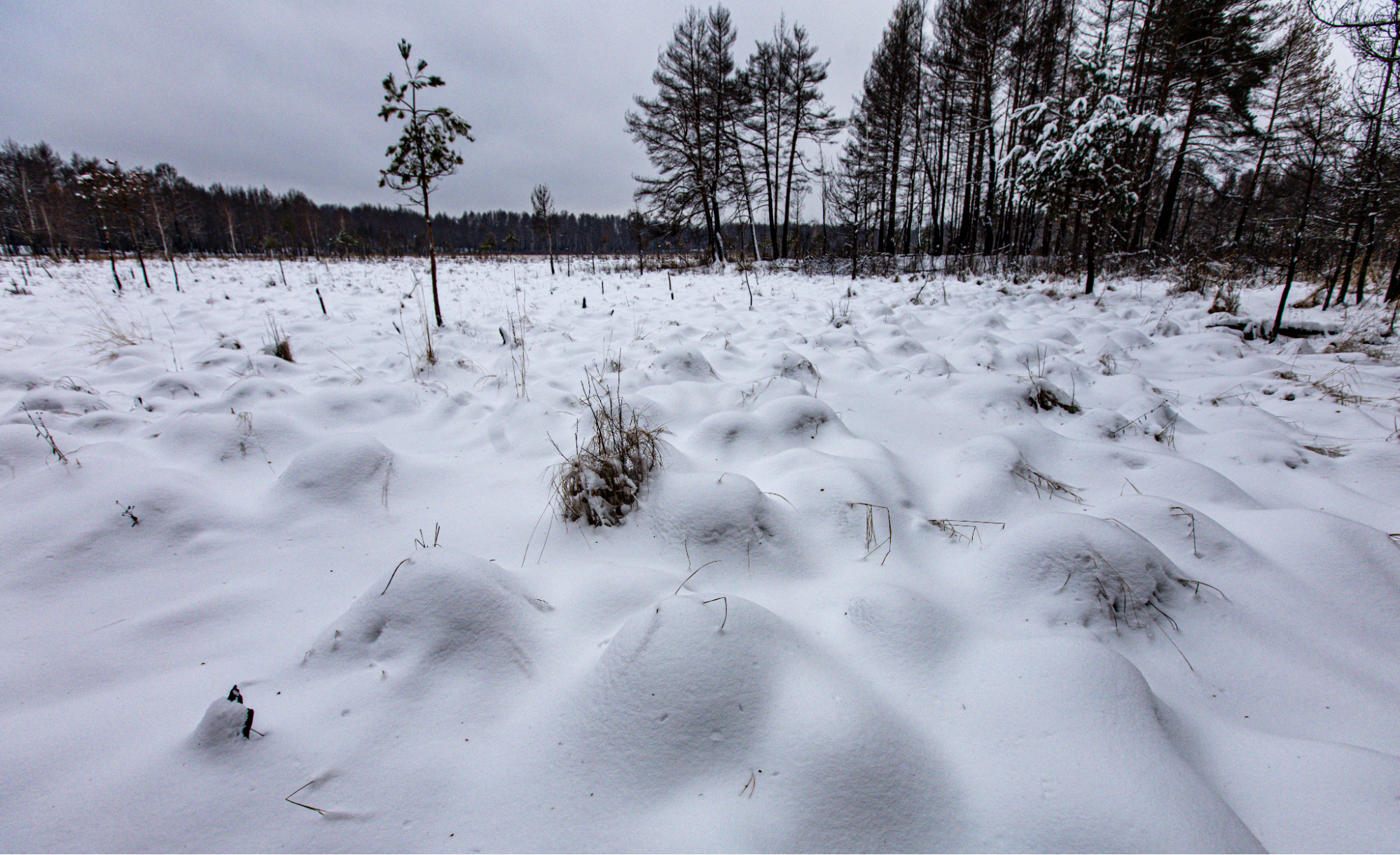
A snow-covered swamp that remained intact. In general, almost the entire reserve territory before human intervention in nature was a wetland. Photo: Mykola Tymchenko
The radiation factor is no less critical. If radionuclide-contaminated water from the northern territories of the exclusion zone is directed to flood, it can increase the radiation level, where it is relatively low. This is one of the most challenging nuances of the wetland project for the reserve, which requires the creation of a detailed map of the radiation background throughout the zone.
"Irrigating wetlands is a trend in global practice, which in our case will also create an additional barrier against repeated invasion. We can do some pilot projects at this stage, but it is too early to start a long-term process and assess its consequences for nature," says the hydrologist.
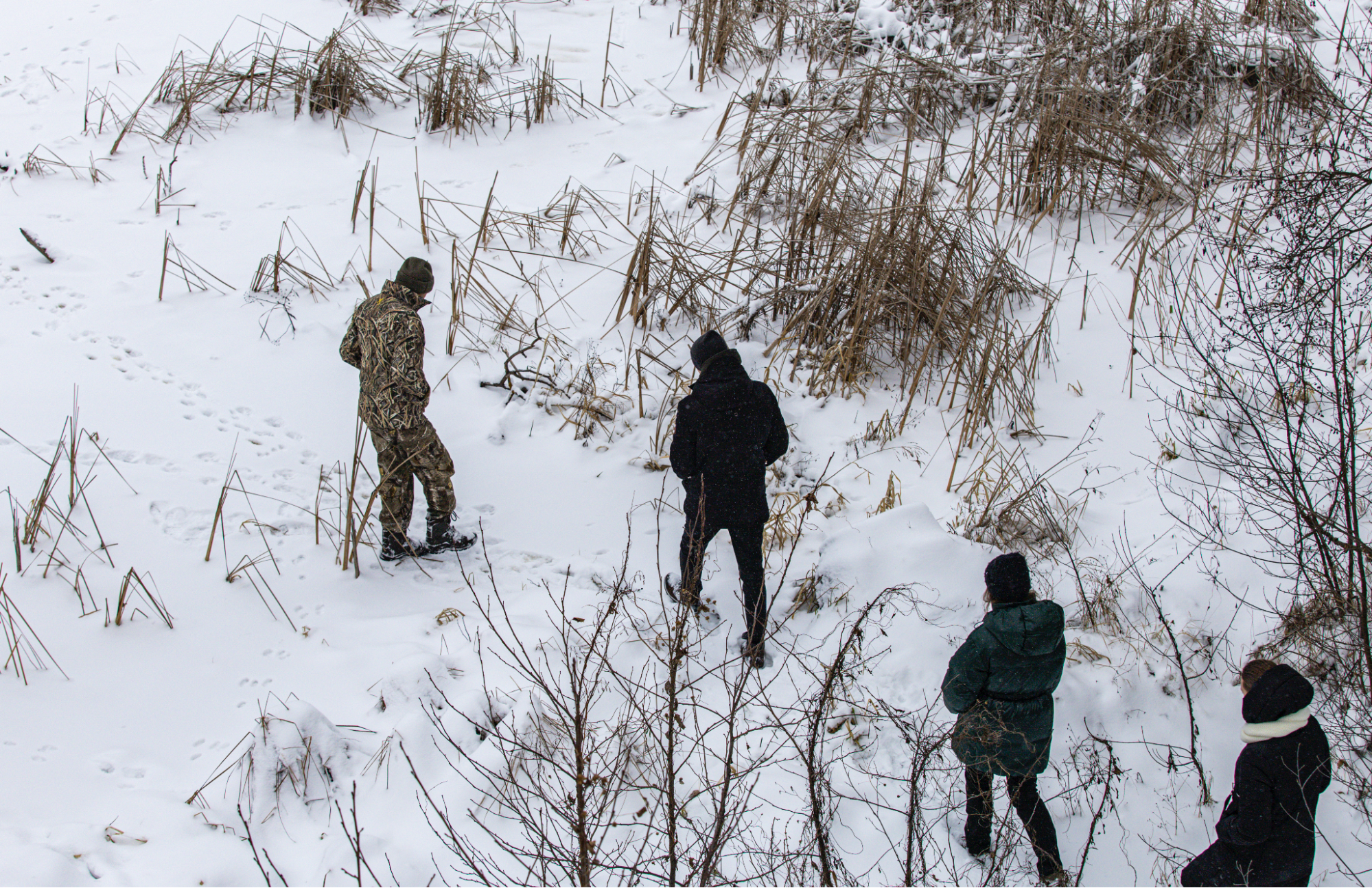
Photo: Mykola Tymchenko
The swamps will be restored one day. Developing all the scenarios requires a lot of resources, time, and research — which means that it all comes down to funding. So far, consultations are underway with the German Zukov Foundation, the Frankfurt Zoological Society, and the World Wildlife Fund. Scientists of the reserve are determined to implement the project, so that over time, the territory can return to its original appearance.
There are no tourists, but that's even better
As long as the war continues, entry into the exclusion zone is prohibited for everyone except for workers and journalists. This, in fact, brings mainly advantages.

While Rubryka's team was heading through the snow-covered forest to one of the locations, the workers from the conservation department of the reserve, who were following the trail, saw deer on the roadside. They ask us to stop and show us the pictures they just took.
Unlike other nature reserves or national parks, which received income from tourism, the Chornobyl Nature Reserve did not have such an advantage. Even though the "zone" was visited by 120,000 tourists a year before the full-scale invasion, and the cost for an excursion could reach more than ₴12,000 (about $315), the companies did not pay the institution for staying on the territory of the reserve, traveling along its routes or using its locations. Therefore, the reserve did not lose any additional income with the outflow of tourists.
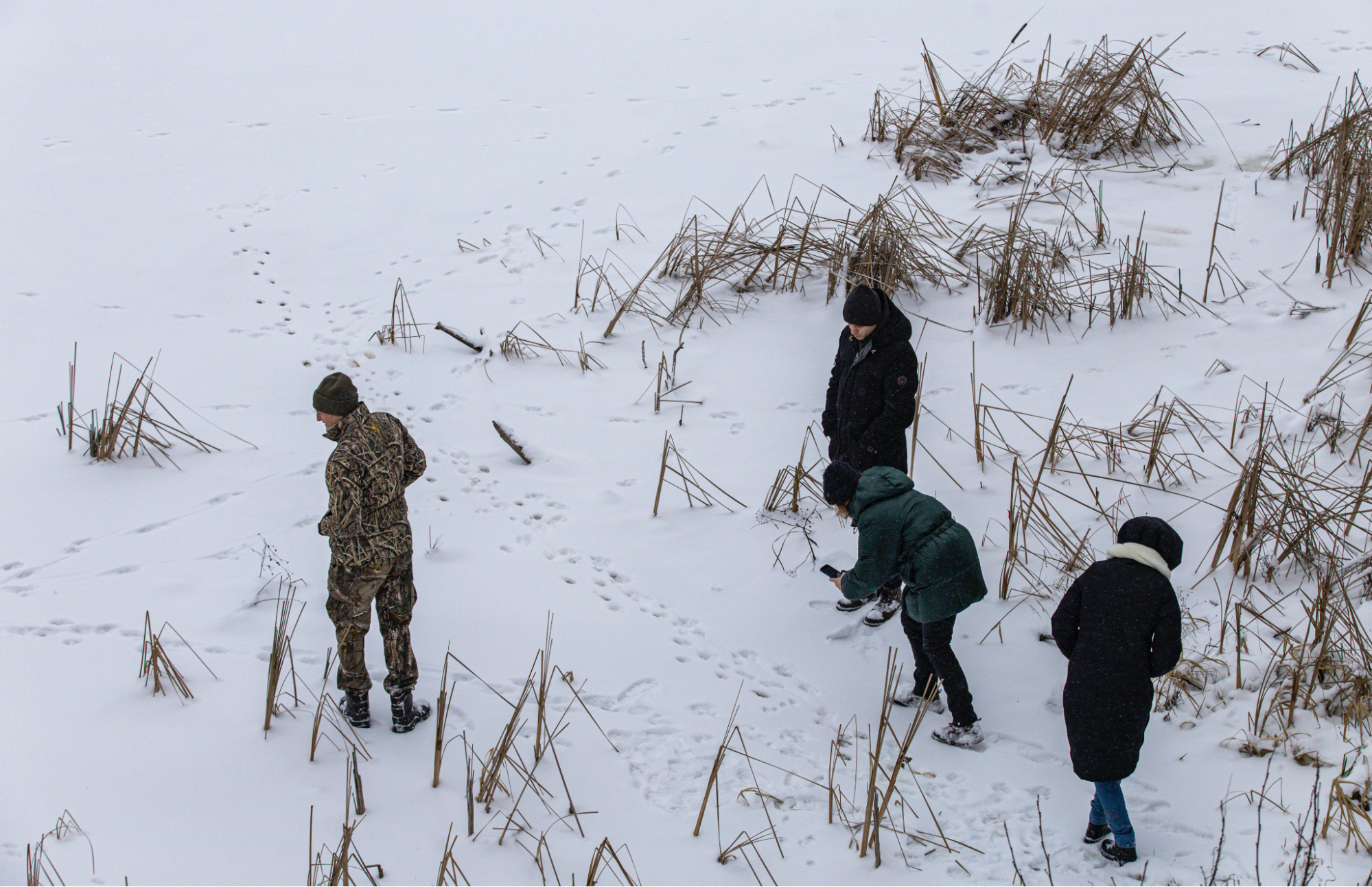
The tracks of wild animals are visible in the snow. Standing near the birdwatching tower on the banks of Prypyat, we saw how an otter, a fox, and a hare passed on the same path. Photo: Mykola Tymchenko
What will be done with the fortifications in the reserve?
In fact, little. Filling in trenches or leveling the landscape in the territories is too expensive and impractical, and the institution says that future reparations will be used more effectively. Trenches do not cause as much damage to the environment as, for example, fires.
Moreover, one can even find a positive point in the fact that fortifications remain in the forests and on the banks of the river. The reserve botanist began researching the overgrowth processes of such landscapes of war. The results can be used by analogy for other damaged territories, and not only by war but also those that were used, for example, for extracting resources. Knowing this, it will be possible to plan appropriate measures for the restoration of these areas.
Another case where the best solution is to do nothing
During our visit to the reserve, we visited one of the areas where a fire recently occurred. Although the pines may still look alive, almost all the trees will die in less than a year. The fire damaged their trunks, so water will not be able to reach the branches, and such tree injuries, unfortunately, cannot heal.
Obrizan does not consider the disappearance of this artificial pine forest to be a tragedy — on the contrary, the reserve's strategy is to do nothing with the fire. In time, nature will restore and diversify itself, and the new forest will be more resistant to various natural phenomena than any artificial plantations.
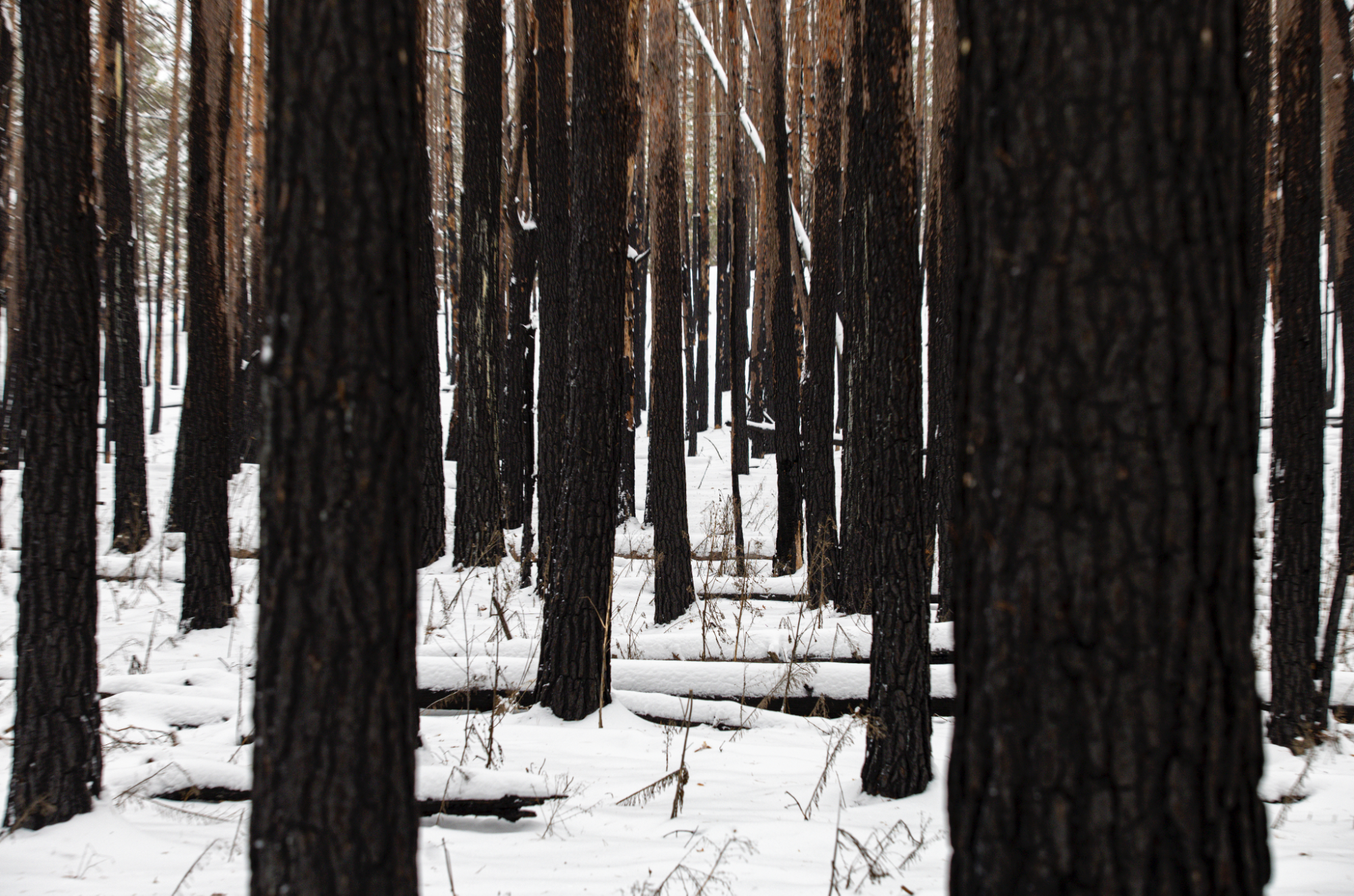
The best way to help nature recover from a fire that destroyed an artificial pine plantation is not to try to restore it. Photo: Mykola Tymchenko
In addition to gradually overgrowing the burned areas with a more fire-resistant mixed forest, there is another way to fight the fire. We have already said that this area was once drained, and fortunately, the marshes can be restored.
On the road leading to the Dytiatky checkpoint, the entry point into the exclusion zone, we contemplated the undrained swamps. Among the snow-covered banks, overgrown with reeds, they look like huge blankets left by someone. If you look closely, in the bushes and between the trees, there is a chance to see wild animals that are not afraid of people because they do not know what danger they can carry.
The impressions from the trip remain incredible, and the thought comes to mind: that the world looks much better without human intervention.
The project "Biosphere Reserves of Ukraine: stories of War in Nature Conservation Institutions, creating a Green Future" was created with the support of UNESCO. The designations used and the presentation of the material do not imply the expression of any opinion whatsoever on the part of UNESCO concerning the legal status of any country, territory, city, district, or its authorities or concerning the delimitation of its borders. The author is responsible for selecting and presenting the facts in this article and the opinions expressed therein, which are not necessarily the opinions of UNESCO and do not bind the Organization.
Newsletter
Digest of the most interesting news: just about the main thing



